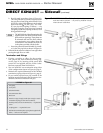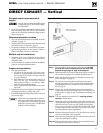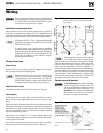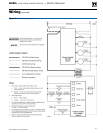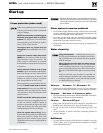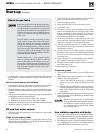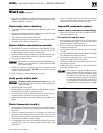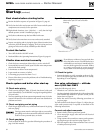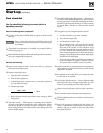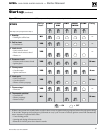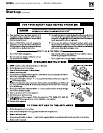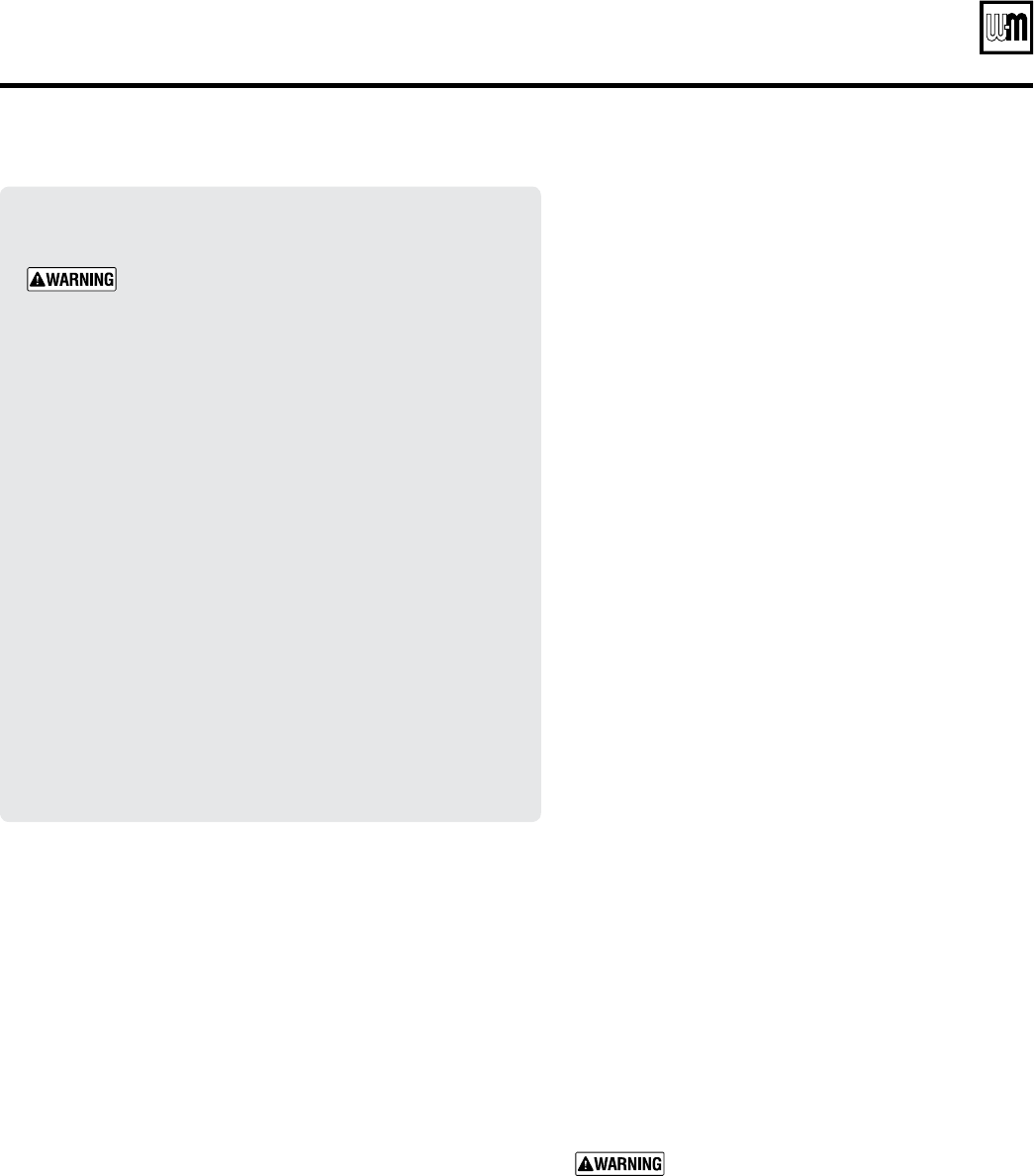
Part number 550-142-054/0411
GV90+ gas-fired water boiler — Boiler Manual
60
2. See Replacement parts at the end of this manual for Weil-McLain
part numbers to obtain antifreeze through a Weil-McLain dis-
tributor.
Use the correct amount of antifreeze
1. Determine the freezing temperature needed (to protect against
lowest likely temperature the system water will encounter).
2. Find the antifreeze concentration by volume needed for this tem-
perature from the antifreeze manufacturer’s data on the antifreeze
container.
3. Add up the volume (gallons) of all system piping and components,
including the expansion tank and boiler.
a. Boiler water content is listed in Figure 109, page 101.
b. Remember to include expansion tank water content.
4. Multiply this volume by the (percent) antifreeze needed to find the
number of gallons of antifreeze to add.
Fill and test water system
1. Fill system only after ensuring the water meets the requirements
of this manual.
Purge air from water system
1. Connect a hose to the purge valve (see purge/drain valves in piping
diagrams beginning with Figure 17, page 16. Route hose to an area
where water can drain and be seen.
Start-up (continued)
Check for gas leaks
Before starting the boiler, and during initial opera-
tion, use a leak detector or smell near the floor and
around the boiler for gas odorant or any unusual
odor. Remove boiler front door and smell interior
of boiler enclosure. Do not proceed with startup
if there is any indication of a gas leak. Repair any
leak at once.
DO NOT adjust or attempt to measure gas valve
outlet pressure except where instructed specifi-
cally in this manual. This setting is suitable for
natural gas and propane, requiring no field ad-
justment. Attempting to alter or measure the gas
valve outlet pressure without following the correct
procedures could result in damage to the valve,
causing potential severe personal injury, death or
substantial property damage.
Propane boilers only — Your propane supplier
mixes an odorant with the propane to make its
presence detectable. In some instances, the odor-
ant can fade, and the gas may no longer have an
odor. Before startup (and periodically thereafter),
have the propane supplier verify the correct odor-
ant level in the gas.
2. Close the boiler or system isolation valve between the
purge valve and fill connection to the system.
3. Close zone isolation valves.
4. Open quick-fill valve on cold water make-up line.
5. Open purge valve.
6. One zone at a time, open the isolation valves. Allow
water to run through the zone, pushing out the air. Run
until no noticeable air flow is present. Close the zone
isolation valves and proceed with the next zone. Follow
this procedure until all zones are purged.
7. Close the quick-fill water valve and purge valve and
remove the hose. Open all isolation valves. Watch that
system pressure rises to correct cold-fill pressure.
8. After the system has operated for a while, eliminate
any residual air by using the manual air vents located
throughout the system.
9. If purge valves are not installed in system, open manual
air vents in system one at a time, beginning with lowest
floor. Close vent when water squirts out. Repeat with
remaining vents.
10. Open automatic air vent (diaphragm-type or bladder-
type expansion tank systems only) one turn.
11. Starting on the lowest floor, open air vents one at a time
until water squirts out.
12. Repeat with remaining vents.
Pressurize system
1. Close manual and automatic air vents and boiler drain
valve.
2. Fill system to correct system pressure. Correct pressure
will vary with each application.
a. Typical cold water fill pressure for a residential
system is 12 psi (when using a 30 PSIG boiler relief
valve).
b. Pressure will rise when boiler is turned on and sys-
tem water temperature increases. Operating pressure
must never exceed 5 PSIG less than the boiler relief
valve setting.
3. At initial fill and during boiler startup and testing, check
system thoroughly for any leaks. Repair all leaks before
proceeding further.
Eliminate all system leaks. Continual fresh
make-up water will reduce boiler life. Minerals
can build up in sections, reducing heat trans-
fer, overheating heat exchanger, and causing
heat exchanger failure.
Use inhibitor supplied with boiler
1. The GV90+ boiler is shipped with Sentinel X100 inhibi-
tor and Sentinel inhibitor test kit. See Replacement parts
at the end of this manual for re-ordering information.
2. After filling the system as directed in these instructions,
use a caulking gun to inject the X100 inhibitor into the
system, following the instructions on the tube.



